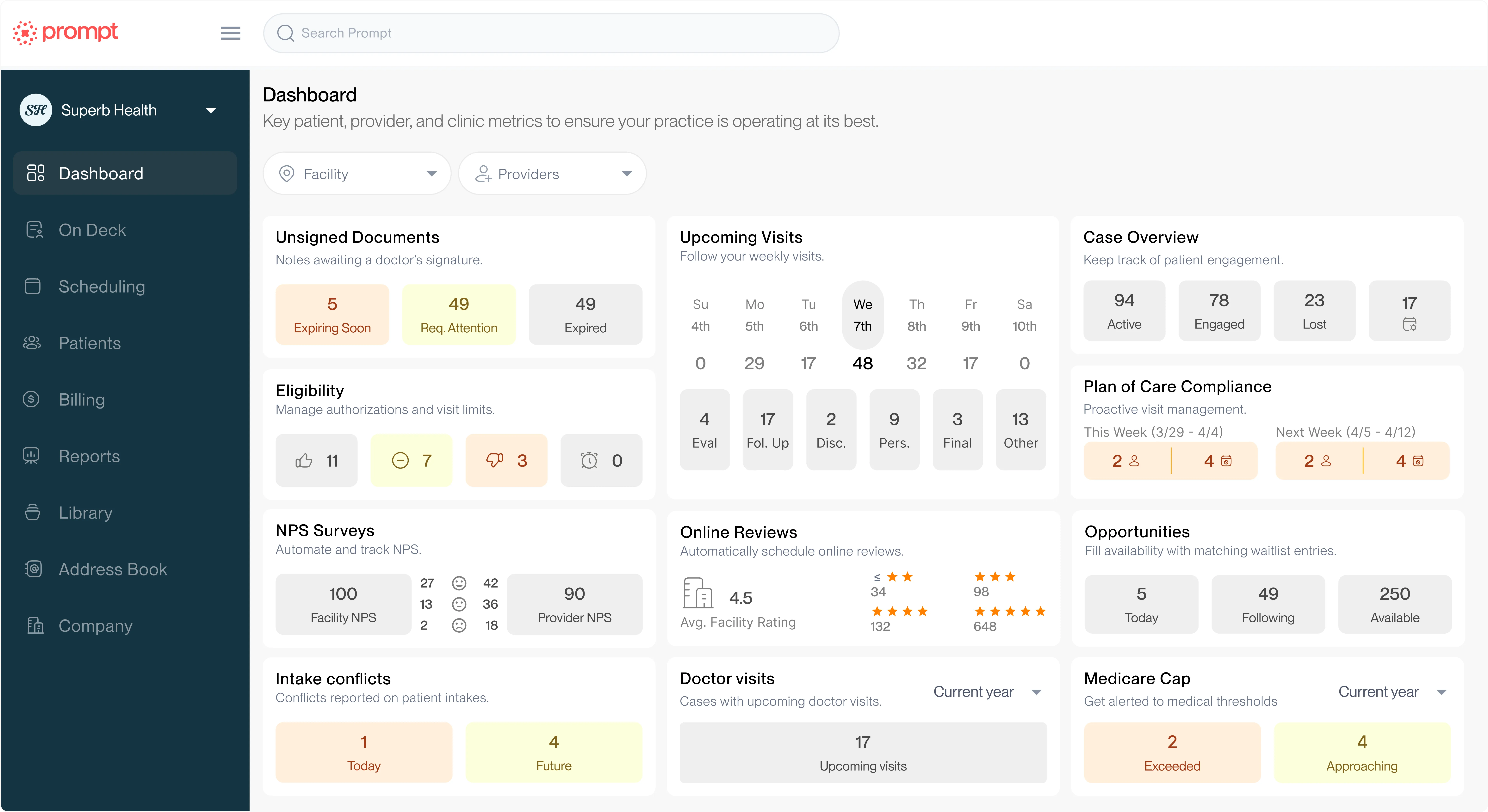See Prompt in action!


Rehab therapy practices face a persistent challenge: ensuring that patients consistently arrive for their appointments and complete their entire course of care.
While this might seem straightforward, it actually requires overcoming several obstacles that directly impact patient outcomes, retention, and practice revenue.
Patient drop-offs (when a patient discontinues their therapy before completing their plan of care or achieving their goals) are an ongoing struggle in rehab therapy. Clinics frequently focus on individual visits rather than a comprehensive plan of care.
But focusing solely on visits neglects the patient's long-term journey, creating "downstream chaos" as appointment schedules become unpredictable, leading to inefficiencies and lost revenue.
Patients often discontinue therapy because they either feel better or fail to see immediate improvement. Both situations indicate a crucial gap: patient expectations were not adequately set or managed.
The patient who feels better may not understand that feeling better isn’t the same thing as healing the injury and reaching full recovery, so they assume that feeling better means they are done with therapy.
A patient who fails to see immediate improvement may not understand the timeline and work required to reach their goals, so they assume therapy isn’t effective and stop coming before their plan of care has had a chance to deliver results.
Without clearly communicated expectations, patients are less likely to understand the importance of completing their therapy, leading to increased drop-offs and diminished patient success.
.png)
Jerry Durham, CEO of the Client Experience Company, talks about this frequently with the rehab therapy clinic owners he’s coaching. Jerry says clients frequently ask him to help them manage cancelations, but he challenges them to prevent cancelations in the first place.
The cornerstone to overcoming these challenges lies in effectively using a comprehensive plan of care. This isn't merely an administrative formality but a strategic tool to set clear expectations and create a shared understanding between patient and therapist.
Jerry says, “ The deliverable, the big peak moment, the crescendo that (the patient) is waiting for is the plan of care. This is the sell. It can't be your treatments. It can't be your services. Those are called commodities. This plan of care is the value sell. This plan of care is (the patient’s) journey from today through until his desired outcome. So it is presented as a map or a journey back to, for example, deadlifting in the gym and waking up with no morning pain. That's the plan of care.”
A well-structured plan of care outlines the patient's therapeutic journey, from initial assessment through to their ultimate goal of improved health.
By clearly mapping out what the patient should expect at every stage, therapists can proactively manage potential issues, such as patients prematurely feeling "good enough" or becoming discouraged when improvement isn't immediate.
The physical act of providing patients with a tangible, printed plan of care significantly enhances commitment and retention.
A clear, easy-to-understand document that patients can reference regularly reinforces their commitment to their recovery journey, increasing their likelihood of consistently attending scheduled appointments.
AI plays a transformative role in ensuring the consistent application of best practices around patient engagement, documentation, and care planning.
AI tools, like ambient listening, smart dictation, and customized patient engagement solutions, free therapists from administrative burdens, allowing them to focus more intensely on patient communication and education.
There are 2 direct ways AI scribing helps physical and occupational therapists ensure they consistently deliver a plan of care to their patients:
Achieving consistent patient arrivals and successful outcomes is about embedding best practices seamlessly into daily workflows. Using technology, particularly AI, ensures that critical tasks like expectation-setting, documentation, and patient communication become repeatable rather than sporadic efforts.
When rehab therapists focus strategically on comprehensive plans of care and harness AI to support consistent execution, they not only drive improved patient outcomes but also build stronger, more successful practices.
Addressing patient drop-offs by shifting the focus from individual visits to an integrated, patient-centric approach sets clinics up for sustainable success: benefitting patients, providers, and the practice as a whole.
Help your practice grow
From intake to insights, Prompt is the all-in-one platform you need